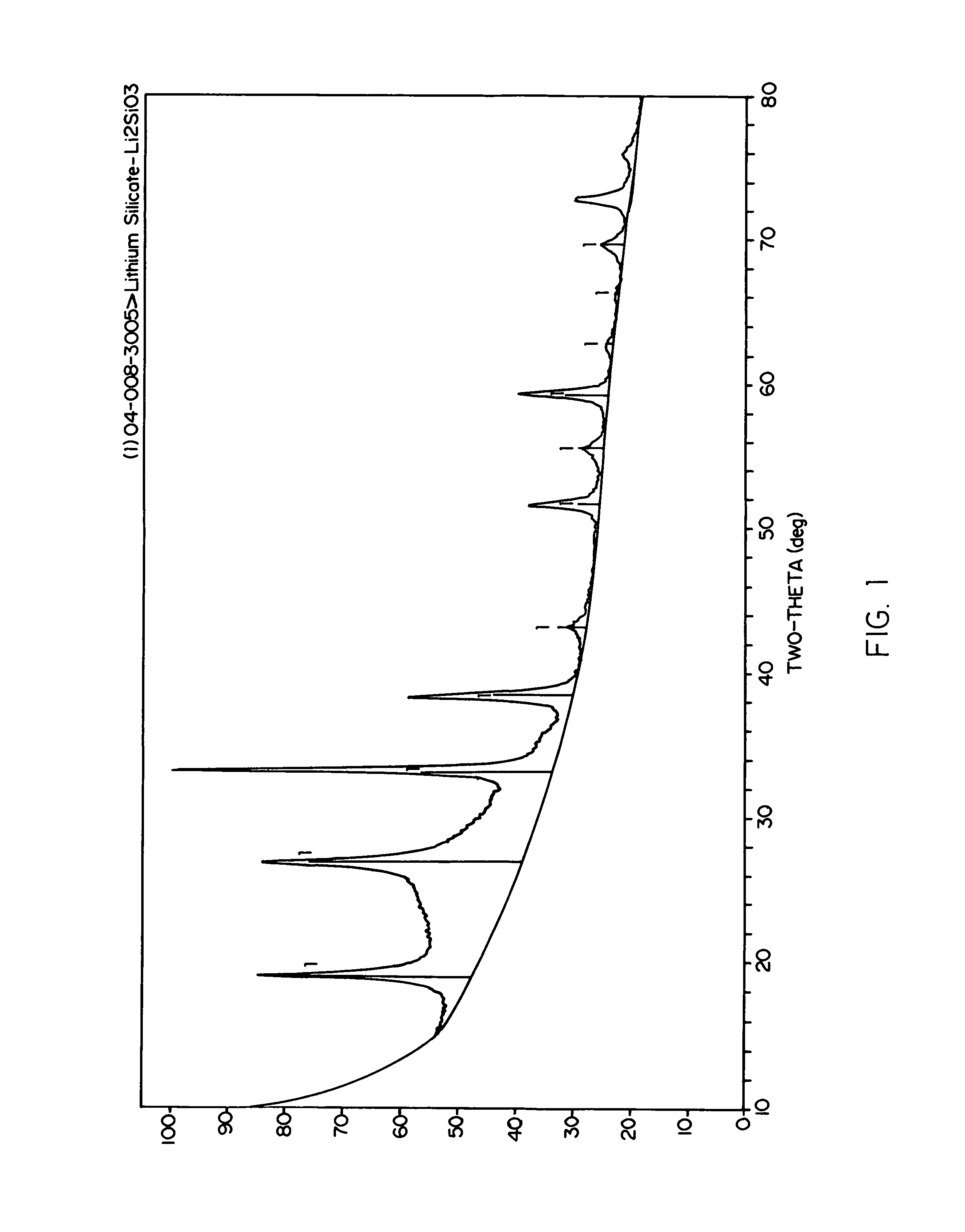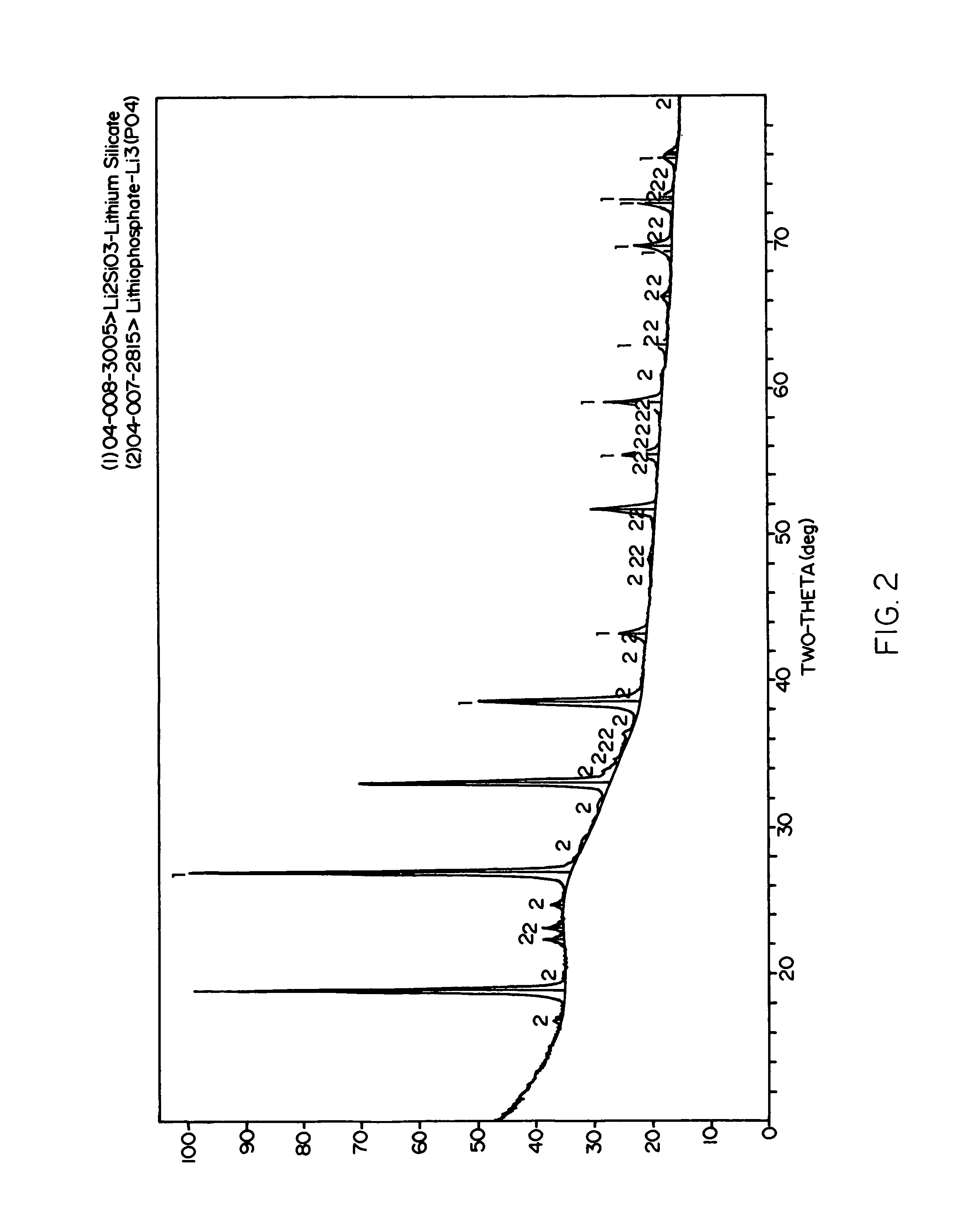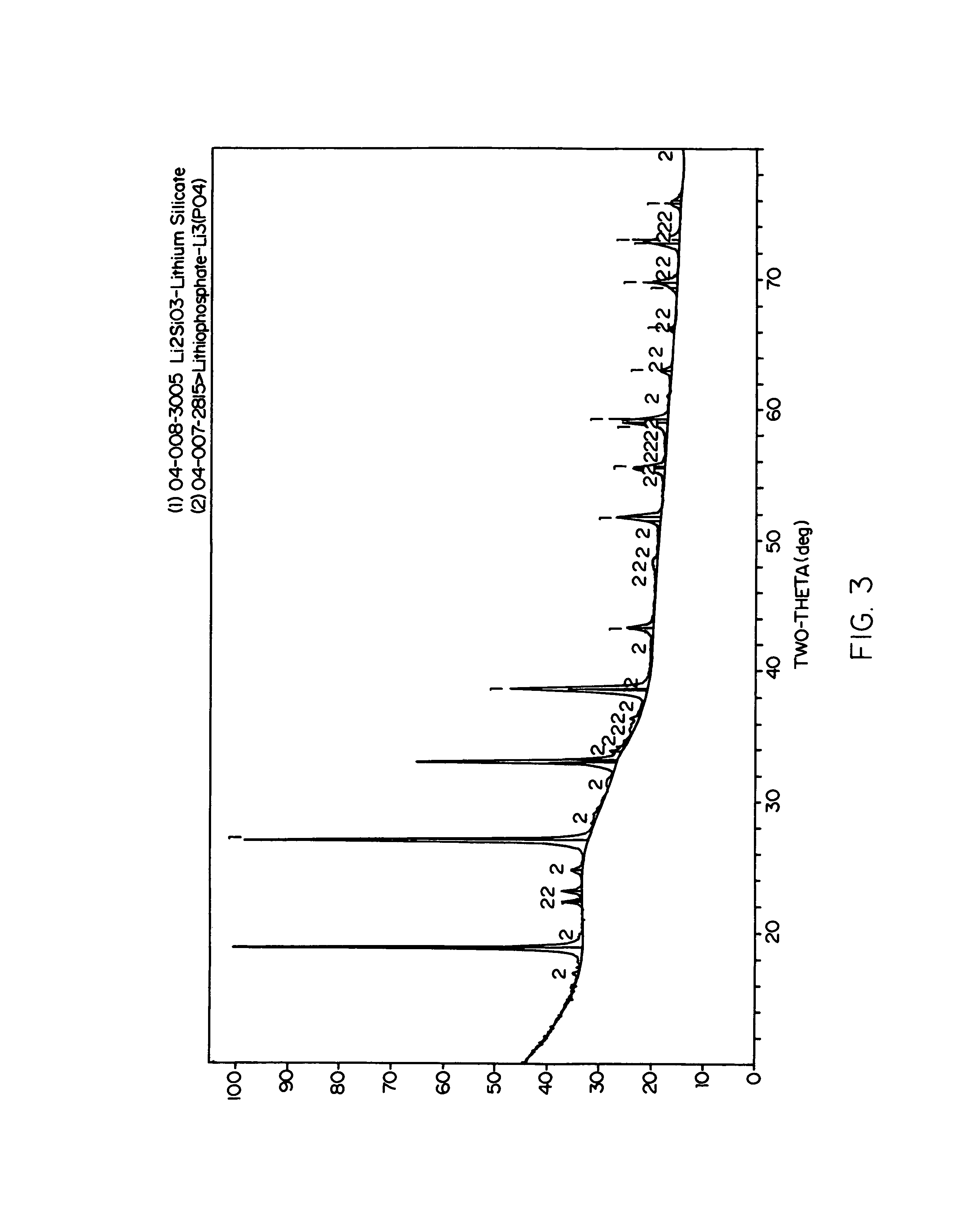Lithium silicate glass ceramic for fabrication of dental appliances
a technology dental appliances, which is applied in the direction of glass pressing apparatus, prosthesis, teeth capping, etc., can solve the problems of only using a low melting temperature, negative effect of lithium silicate glass ceramic, etc., and achieves optimal physical properties, easy hot pressing, and easy control.
- Summary
- Abstract
- Description
- Claims
- Application Information
AI Technical Summary
Benefits of technology
Problems solved by technology
Method used
Image
Examples
Embodiment Construction
[0053]The prior art materials are based on the formation of lithium disilicate materials. A principal object of the present invention is to prepare a controlled lithium silicate glass ceramic using in the formulation a specific silicon dioxide and lithium oxide molar ratio with excellent physical properties for manufacturing dental restorations. The glass material subjected to a heat treatment produces an optimal lithium silicate crystal forming a glass ceramic product with outstanding mechanical properties, excellent optical properties, a very good chemical solubility, little contraction and high flexural strength values.
[0054]The lithium silicate of the present invention preferably comprises the following components and compositions:
[0055]
weight % compositionComponentminimummaximumSiO253.057.0Al2O33.05.0K2O3.05.0CaO0.01.0B2O30.02.0CeO20.01.0MgO0.01.0Fluorine 0.01.0Li2O14.017.0ZrO24.05.0TiO20.03.0P2O52.03.0SnO0.01.0Er2O30.02.0V2O50.01.0GeO20.58.0Ta2O50.03.0Sm2O31.06.0Pr2O30.01.0Eu2...
PUM
| Property | Measurement | Unit |
|---|---|---|
| molar ratio | aaaaa | aaaaa |
| molar ratio | aaaaa | aaaaa |
| molar ratio | aaaaa | aaaaa |
Abstract
Description
Claims
Application Information
 Login to View More
Login to View More - R&D
- Intellectual Property
- Life Sciences
- Materials
- Tech Scout
- Unparalleled Data Quality
- Higher Quality Content
- 60% Fewer Hallucinations
Browse by: Latest US Patents, China's latest patents, Technical Efficacy Thesaurus, Application Domain, Technology Topic, Popular Technical Reports.
© 2025 PatSnap. All rights reserved.Legal|Privacy policy|Modern Slavery Act Transparency Statement|Sitemap|About US| Contact US: help@patsnap.com



